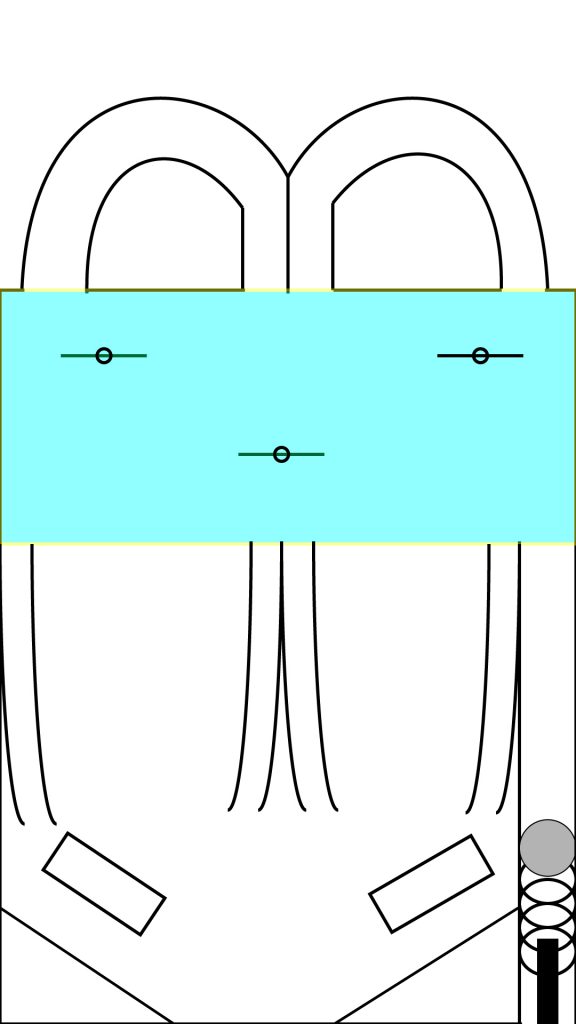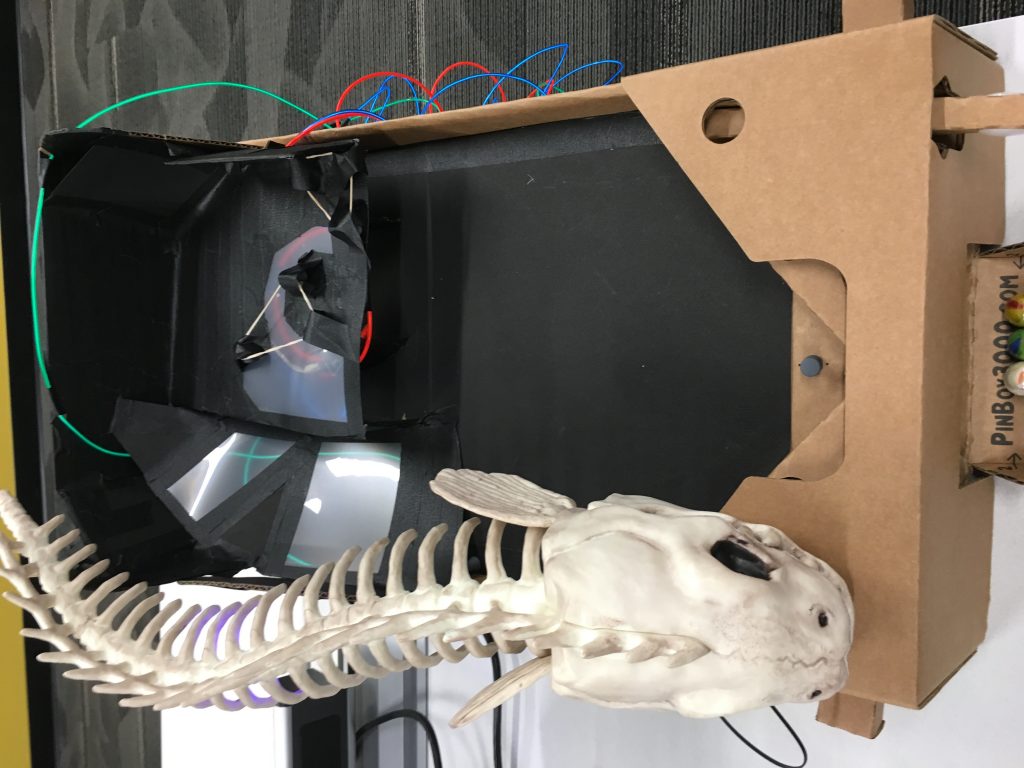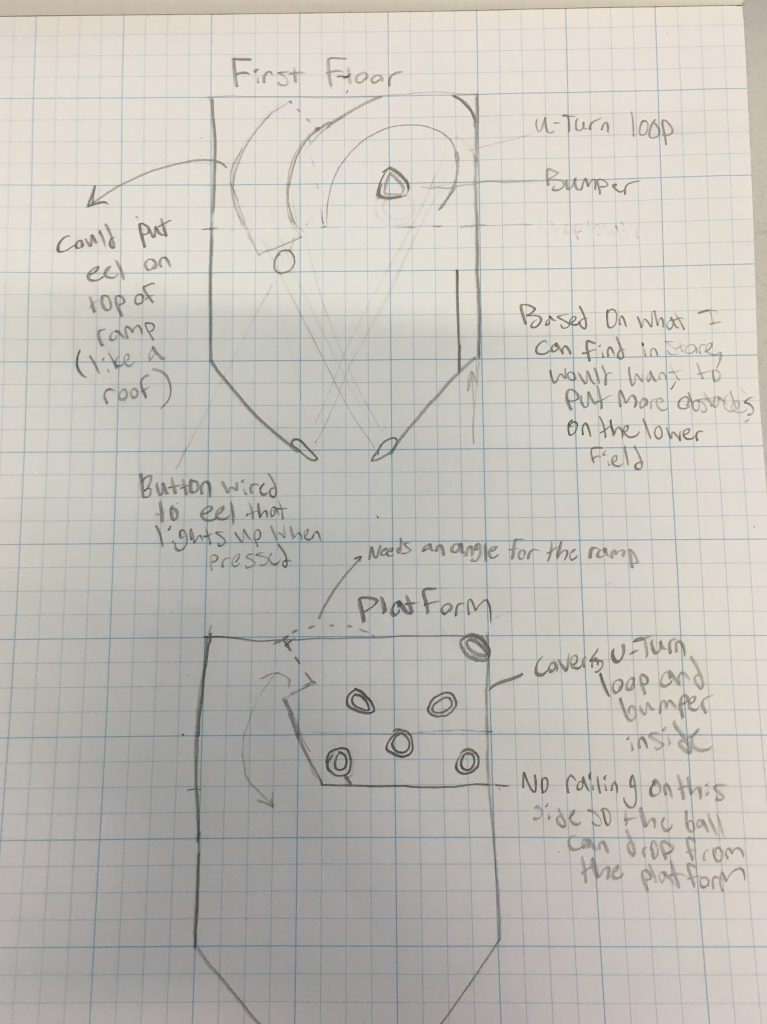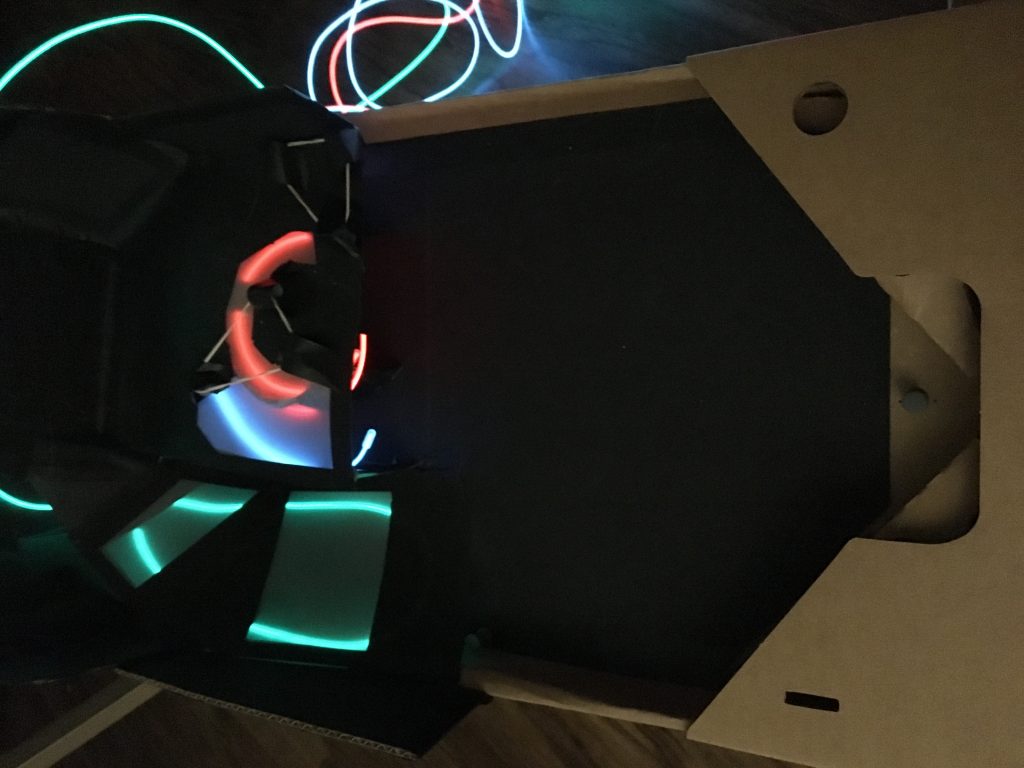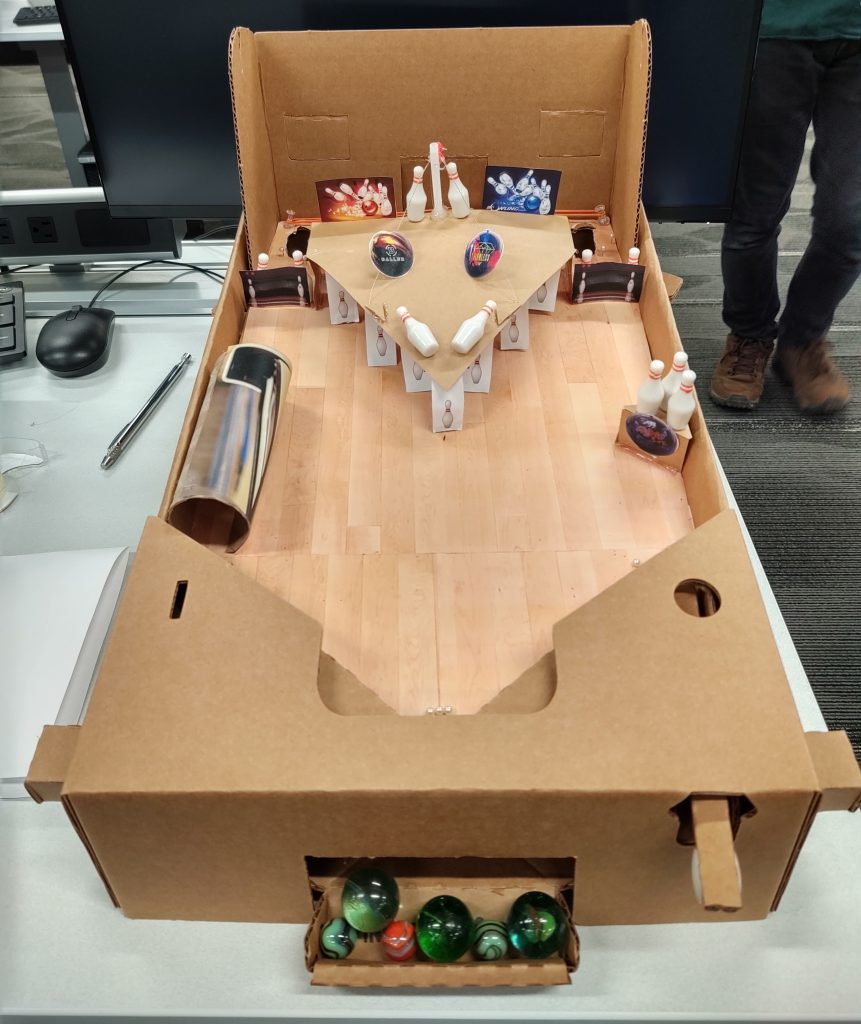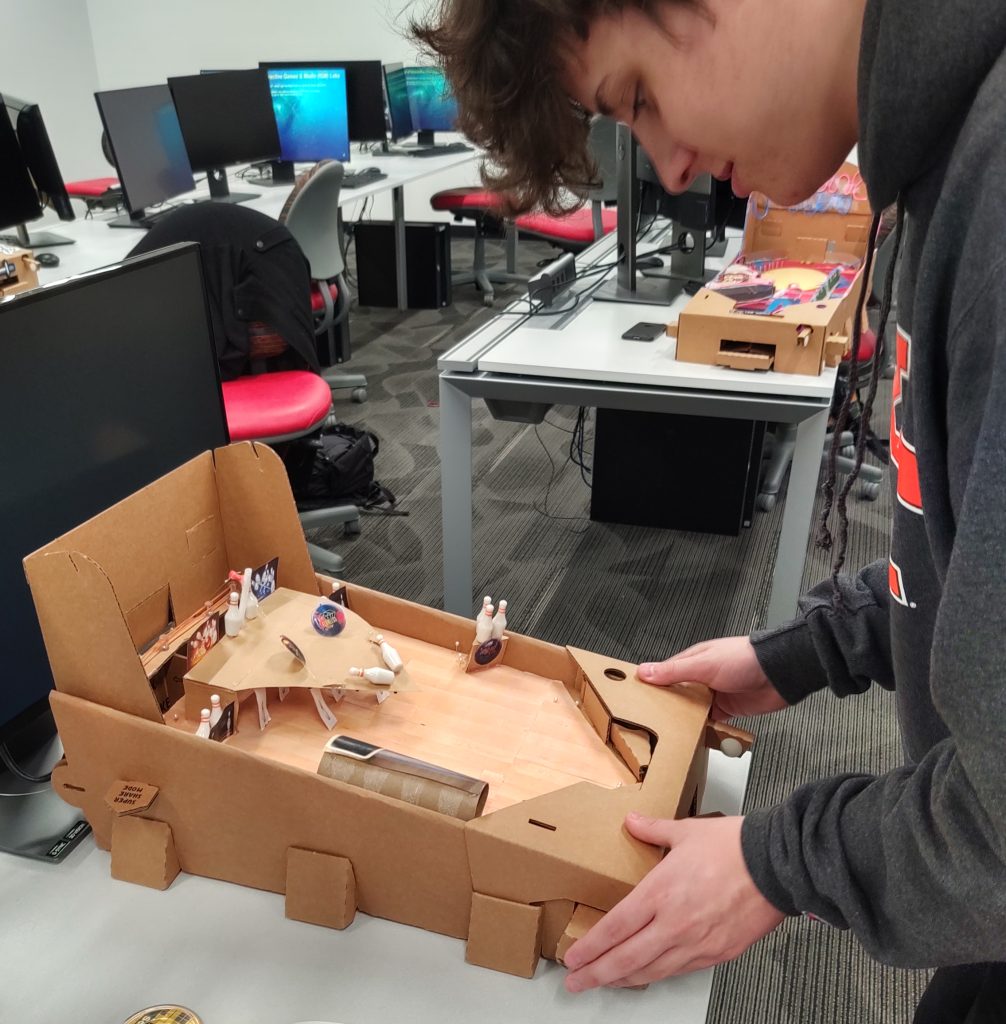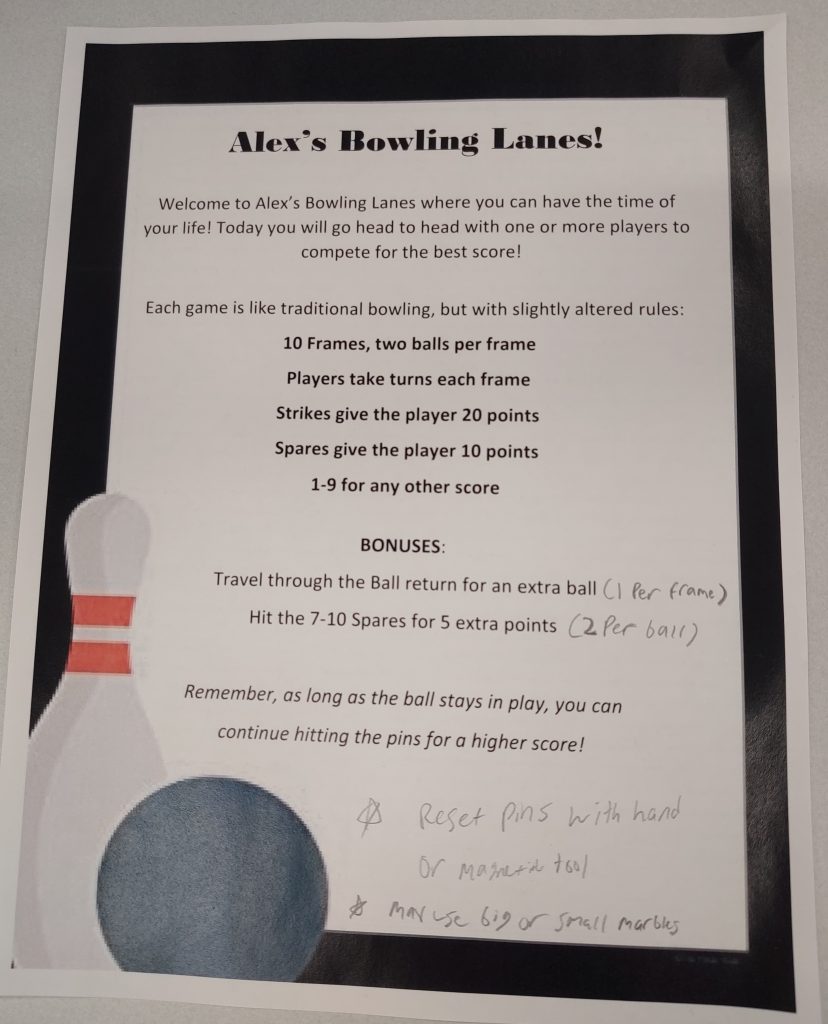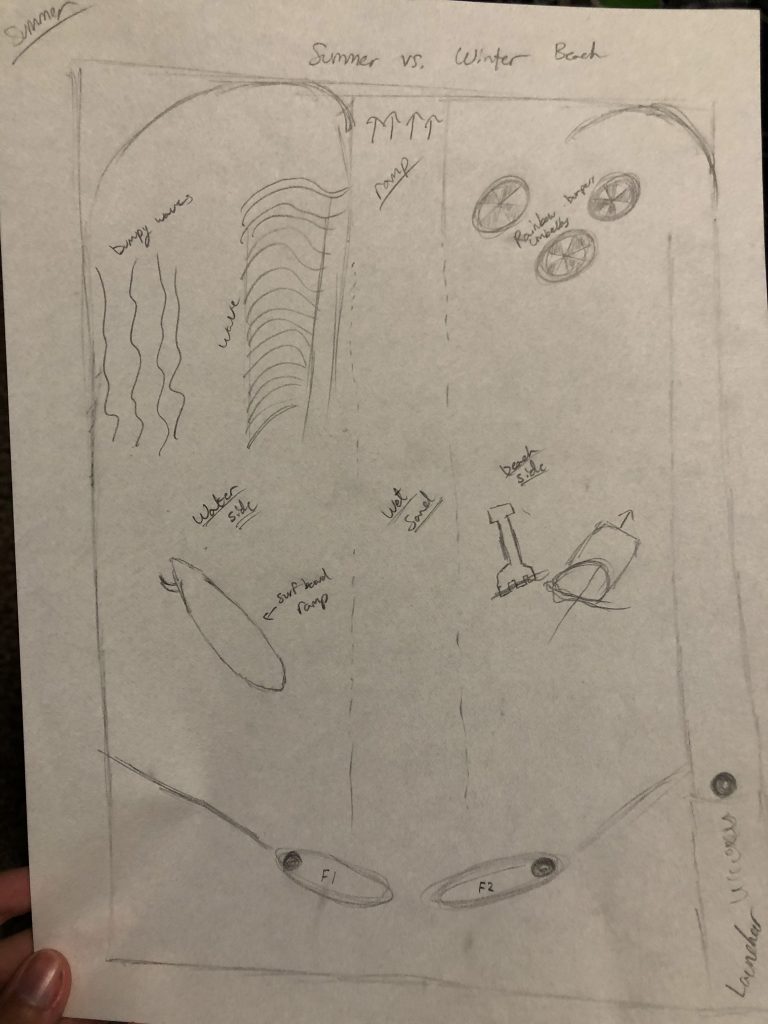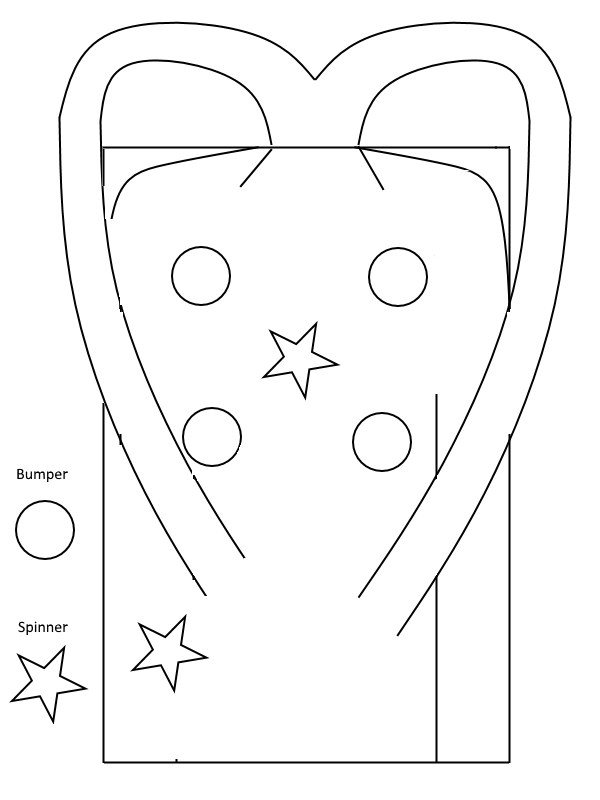The Game I am designing is Into Hollownest based on the game of similar title Hollowknight. This is focused around the different things you see around the landscapes as you adventure through the game. I plan to have a variety of objects that the player can interact with and influence.
The reason I chose this theme is that I really like the game and I am always excited to work with the environment and the features of the world. I am also excited because in week 1 I had the idea of using the sword as either a tunnel or a ramp and I feel like this would be a great time to do that.

This design is meant to be somewhat advanced with an extra flipper, ramps, rails, bumpers, and spinners. But the real advanced idea I have is to make the machine 2 times bigger in all dimensions for a total of 4 times board surface area. The black angled lines are the locations for the flippers, The object on the right is the plunger, the red shape is the spinner, the faces are bumpers, and the sword is a tunnel.
The biggest feedback I have was to make sure my scope is manageable and that the theme was exciting. As this is a very well loved game I really hope I can do the theme justice.
There isn’t much scoring planned for this game so right now I don’t have a main goal for the player to complete.
The biggest issue I may have with this project is the actual construction of the machine itself. As I have not really taken into consideration how large this machine will be or how I am going to build it, that could cause me to run into roadblocks. Based on initial testing the flippers may cause issues due to the needed size and force. After working with some cardboard it may be too hard to build the frame sturdy enough so I plan to work with a few other possible materials.

